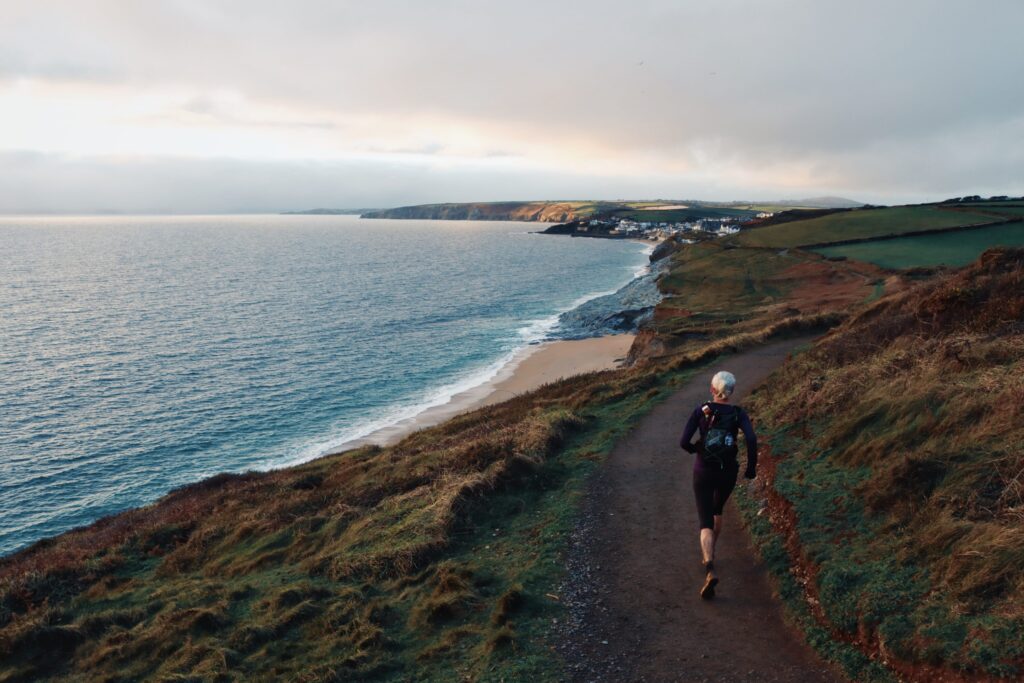Home Story Jenny Tough: A Solo Running Expedition Across the High Atlas
Jenny Tough: A Solo Running Expedition Across the High Atlas
Feature type Story
Read time 6 min read
Published Feb 18, 2020
Author Jenny Tough
Photographer Jenny Tough
In 2017, Jenny Tough – adventurer with a penchant for ultra-endurance – attempted a world-first running expedition to traverse the Moroccan High Atlas mountains solo and unsupported. As part of her project to run through a mountain range on every continent, the 860km run from Talsint to Agadir took 22 days. Using the old Berber trail networks of North Africa’s greatest mountain range, her experience was a wild ride of hostile landscapes, desert heat and Berber hospitality.
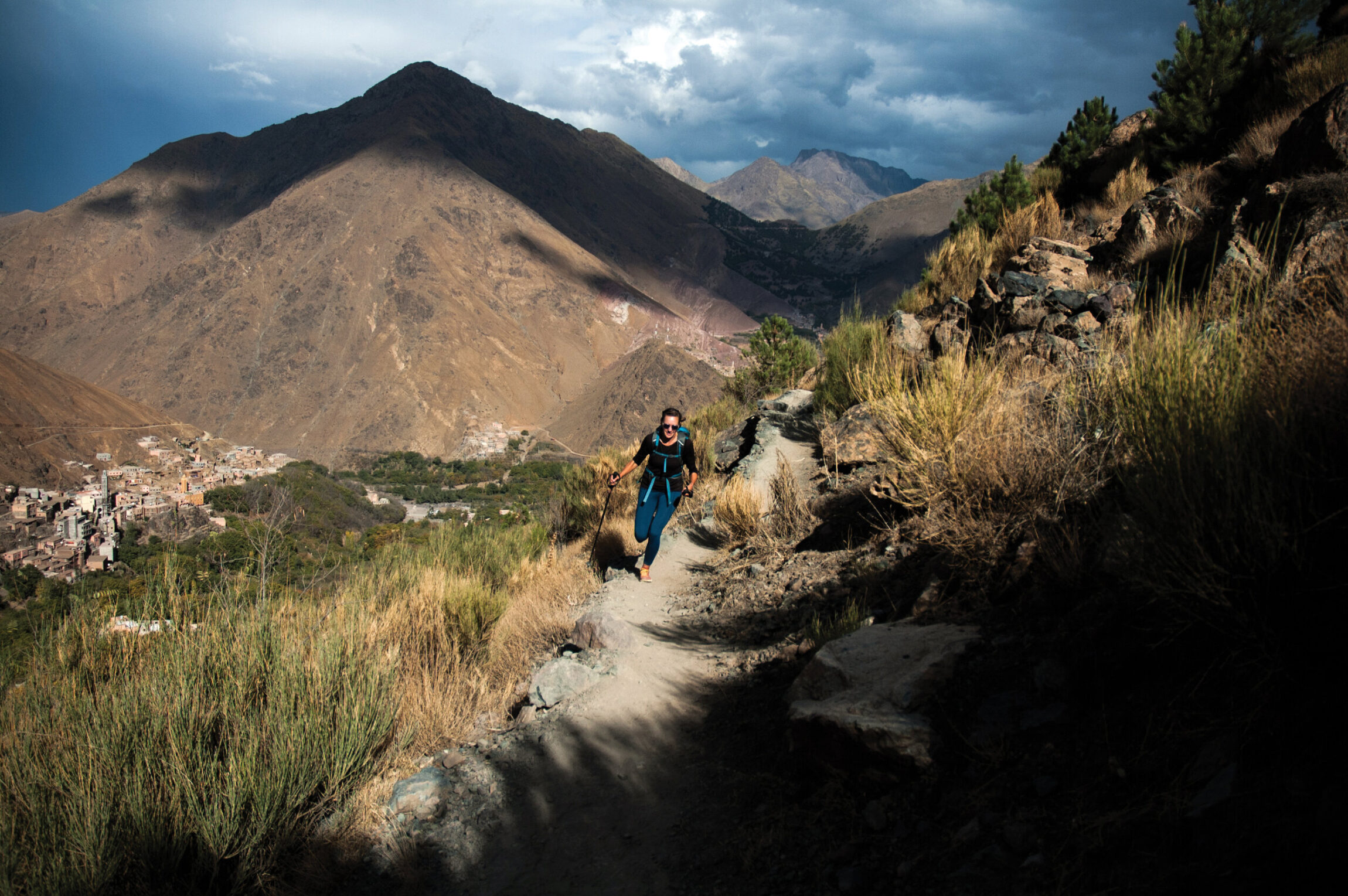
Jenny hits an old Berber trail high above Imlil, one of the larger villages in the central High Atlas.
Up there? Why would you want to go up there? There’s nothing there.’ The friendly crowd of gossiping old men that form in the central square of the small village, smoking cigarettes and keeping an eye on things, think I’m crazy. To them, heading up into the mountains rather than running along the smooth gravel road leading to the next town defies all logic.
‘There are no shops, no phone signal. You will find nothing!’ one of the men interjects, his face riddled with concern.
‘But that’s exactly why I want to go up there’ I reply.
Morocco is a well known tourist destination. But that’s not the Morocco I wanted to explore. Cutting right through the heart of the country are the Atlas Mountains, dividing the Mediterranean coast from the endless sands of the Sahara to the south. These mountains are beautiful, isolated, and frequently inhospitable. Survival alone can be a challenge. Running across the entire range in a single expedition had never previously been attempted, and probably for good reason.
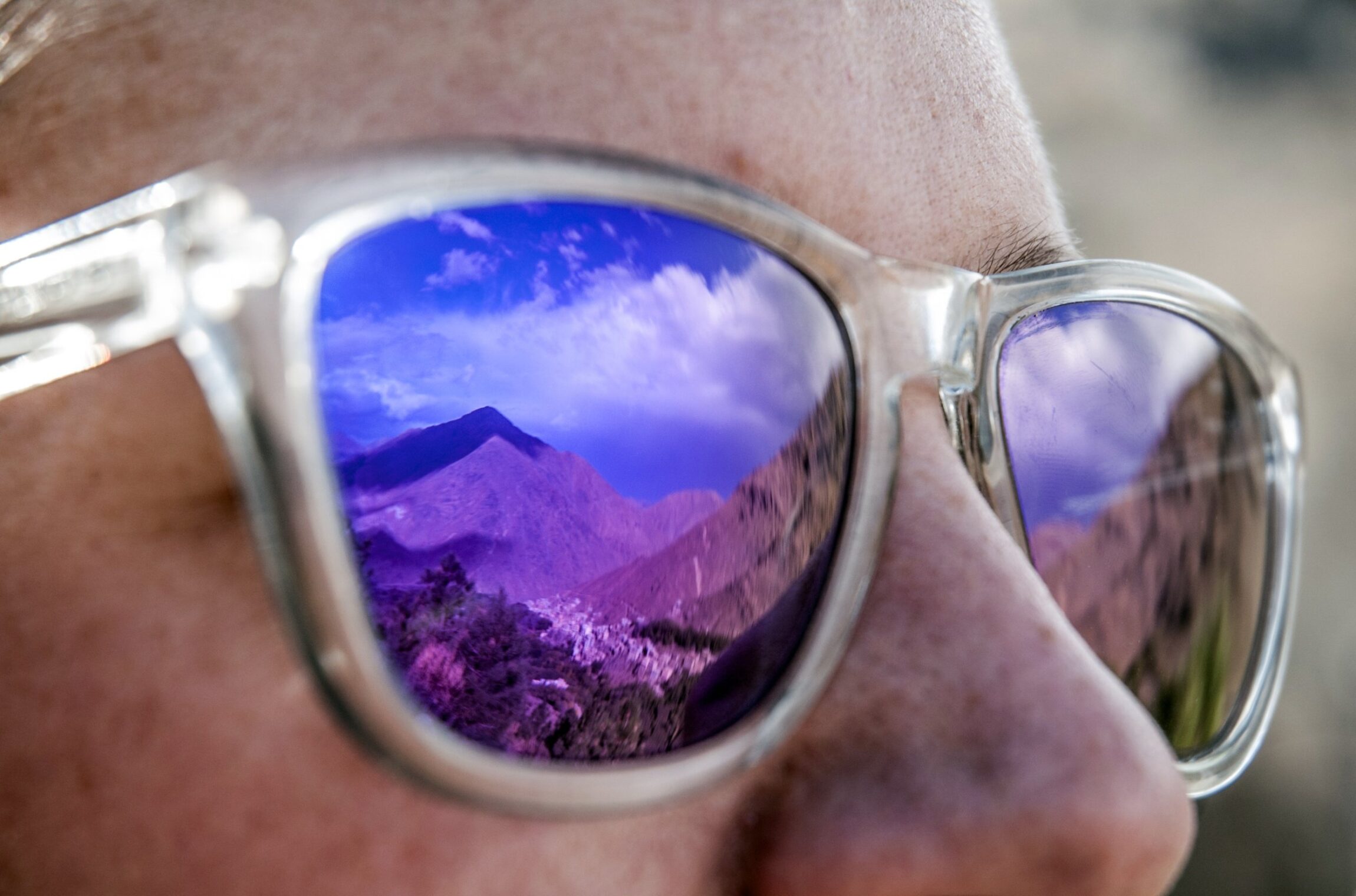
Looking towards the High Atlas and the next village on Jenny’s route.
By contrast to the formidable mountains they live in, the Berbers – who call themselves Tamazight in their own language, which literally means ‘free people’ – are amongst the kindest people I’ve met anywhere in the world. Every day I’m shown incredible generosity and welcomed into their small communities. It’s humbling, and I’m pretty certain I couldn’t be doing this without their unwavering hospitality. Their remarkable knack for finding hidden water sources in the seemingly barren terrain is also incredibly useful.
Now I’m eight days into my expedition. I started my challenge at the eastern edge of the range closest to the Algerian border, where rocky peaks rise dramatically from the arid plains of the Sahara. I’m beginning to leave that desert ecosystem behind as I near the alpine peaks of the central Atlas. The slightly more hospitable landscape – mainly the presence of above-ground water and even occasional shade from trees – urges me onward. I’m planning on taking my route as high as possible, eventually leaving the red earth of the mountain valleys to pit myself against the higher peaks that form the roof of North Africa.
The trail is phenomenal, snaking deeper into the mountains along a precipitous ravine. I run gleefully along, springing down ripples and around ridges on the mountain’s side
The Berber locals, however, see no purpose in my quest. Where I perceive a challenge, they see only danger. Whilst every community I’ve run through so far has shown me outstanding hospitality, they are also unanimously opposed to my mountain running mission. I feel as if I have to be rude to finally make my exit; the gossiping group of men are so insistent that there is nothing out there that they actually try to persuade me to stop, abandon my plans, and wait for the bus that comes on Tuesdays to take me back to civilisation. They are visibly worried when I finally begin running out of their small town, straight towards the rising hills ahead of me. In their culture, a woman running alone through the mountains is a virtually unimaginable event, so I can understand their concern.
After a steep climb and some wandering around on the edges of a spiny ridge, I find a narrow shepherd’s trail. It’s so faint and thin that I don’t see it until it’s almost under my feet. The trail is phenomenal, snaking deeper into the mountains along a precipitous ravine. I run gleefully along, springing down ripples and around ridges on the mountain’s side, dodging boulders with my poles. It’s bliss. I can’t believe no one could understand why I wanted to come up here. I also can’t believe I have it to myself. A trail this good back home in the Scottish mountains would be packed with hikers and trail enthusiasts.
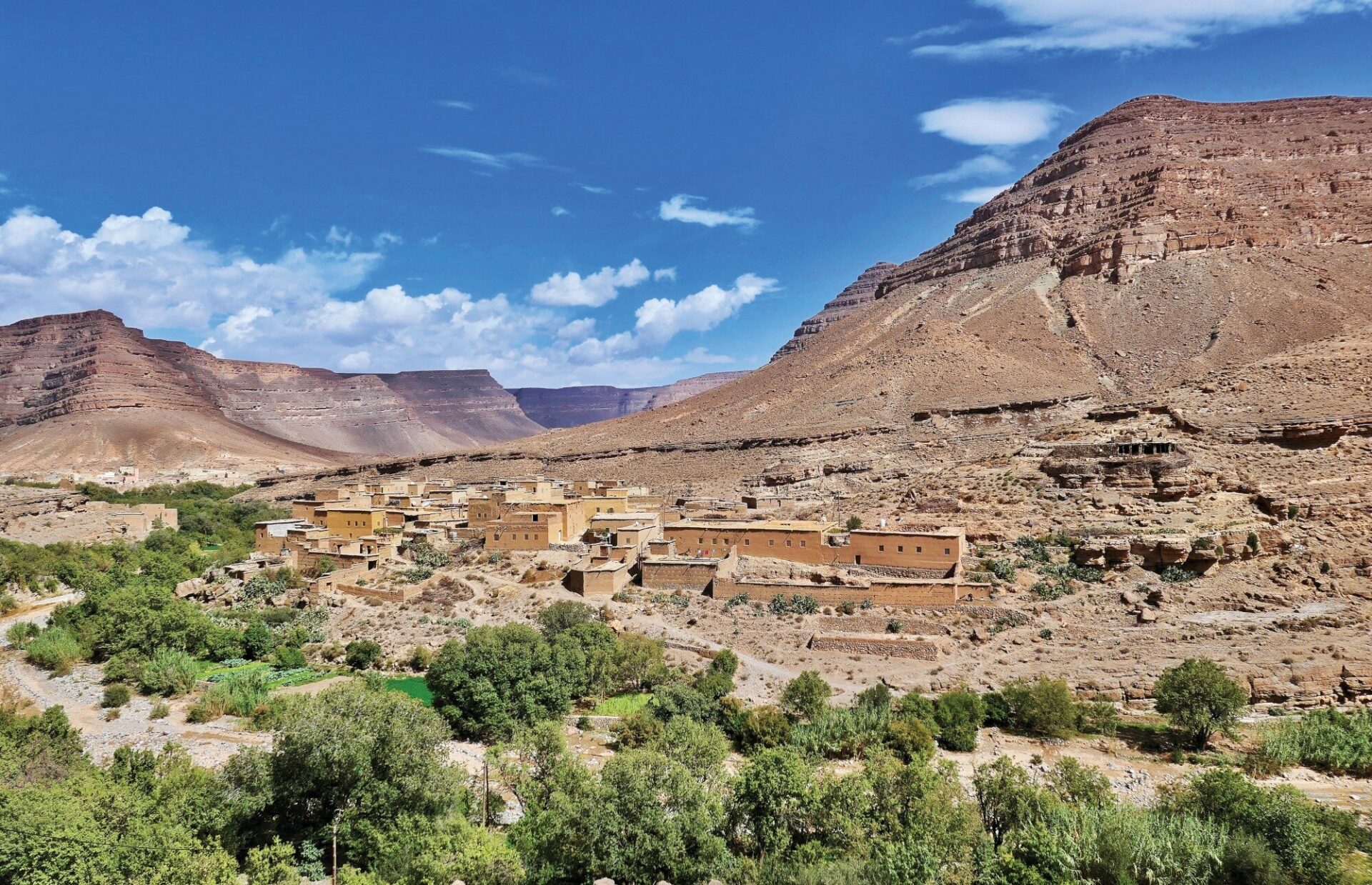
A village at the eastern end of the High Atlas clustered around an oasis in the desert.
After eight days of feeling dehydrated and overheated, I’ve been craving a river like this so strongly that I’m genuinely worried it may be a mirage
The Berber people live in the Atlas as a result of a difficult, ancient history. Their ancestors were forced to flee into the mountains when the first Mohammedan Arabs arrived in the 7th Century AD, led by the warrior General Uqba ibn Nafi during the Arab conquest of the Mahgreb region.
It seems that the Berbers haven’t learned to love these mountains yet, seeing only inhospitable terrain where I see the potential for running and freedom. Soon, though, I’m filled with the joy of pure isolation. Being a woman travelling alone in North Africa can be an exhausting and, at times, frightening experience. I’m grateful for the silence and emptiness of the mountains.
With little chance of seeing anyone else, I can take my long-sleeved shirt off and run a little cooler for a while. In all honesty, I wouldn’t be seen running in my sports bra even in a Western country. The mountains don’t care if you’re male or female, religious or an atheist, dressed in the latest gear or not dressed at all. Yet it saddens me that the people living below this particular mountain have yet to experience the freedom I am relishing.
From the top of the pass, I can take in the view in all directions. With no decent maps of this wild terrain, I am often navigating the old-fashioned way by simply looking at the landscape ahead of me and picking the best line. The Atlas lend themselves easily to this practice. There are seemingly endless clear skies, and the dry, red, rocky hills allow their hidden goat tracks to be easily seen from a higher elevation. I’m almost not bothering to look at the GPS, and instead stay on a compass bearing heading west, simply following the trails that I spot from the top of each climb.
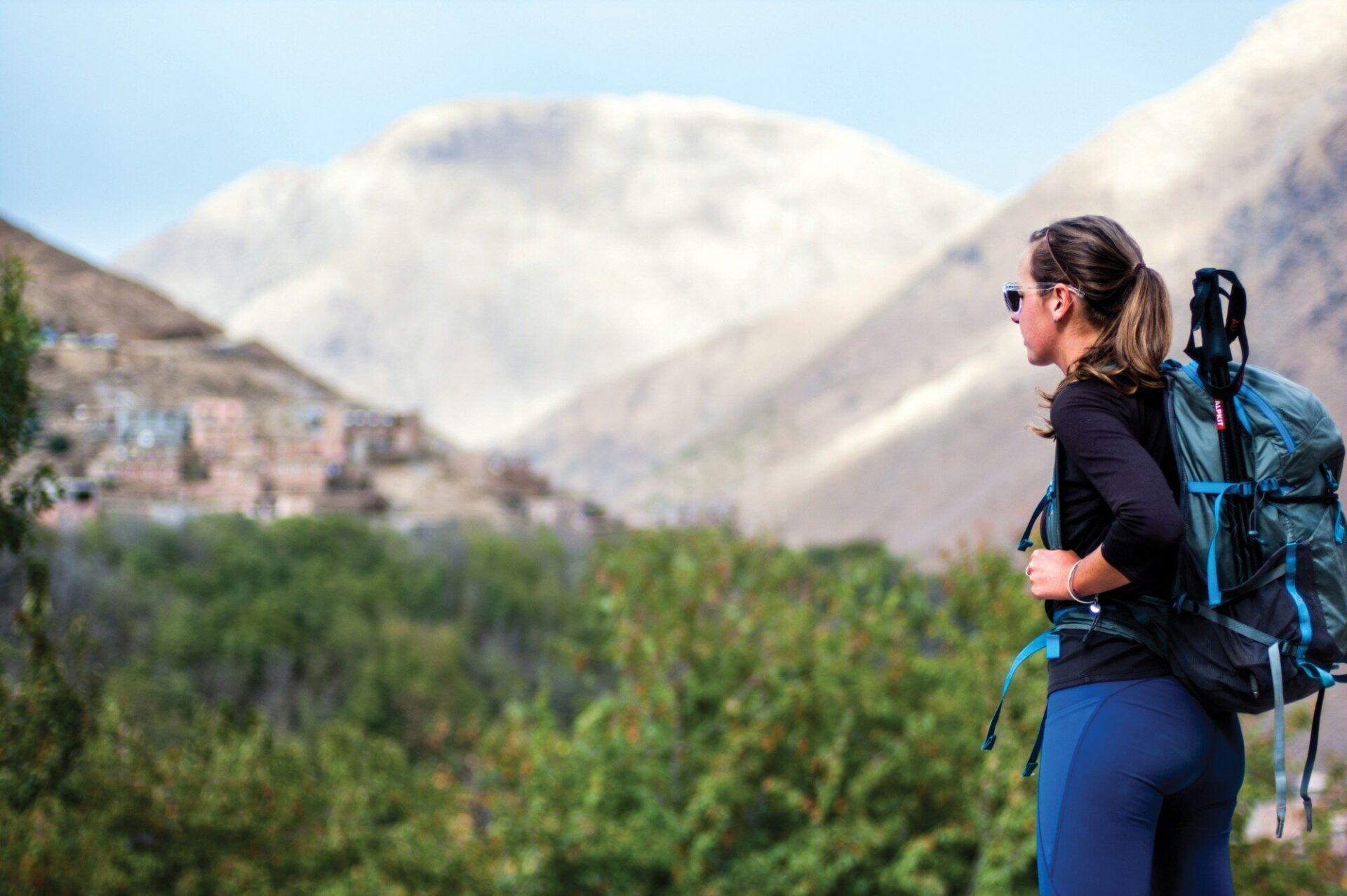
Jenny contemplates the trail ahead near M’Goun.
Ahead of me in the valley below is the most important thing I’m looking for: a speck of lush, bright green vegetation. Green means trees, and trees mean water. The eastern Atlas are largely desert mountains, and I am frequently running the gauntlet between water sources, never sure how long exactly I might have to ration for. Eight days in, my dehydration is compounding, and the sight of a decent water source like this one lifts my spirits immeasurably.
I sprint down the scree slope, taking the most direct route to the water source, desperate for the cooling effect and the chance to drink without rationing. The slope is steep, and I have to make switchbacks to control my speed. I’m practically giddy as I slide over cascading rocks, sometimes losing my footing and putting a hand down behind me, but never stopping. It reminds me of why I love running in the mountains, and by the time I reach the small river I have a huge grin on my face as well as a layer of dirt that covers my whole body.
I pick my way through the line of trees that had been my target, and soon they part to reveal the river. It is, without exaggeration, the most beautiful river I’ve ever seen anywhere in the world. Only a few metres across and barely knee-deep, it’s the largest amount of water I’ve encountered since I started my run. The river is crystal clear, and gurgles gently over pebbles of pale limestone. I practically toss off my backpack and shoes behind me as I sprint for it.
This story first appeared in issue #1 of BASE magazine. You can find the full issue here. To get every issue of BASE delivered directly to your door be sure to subscribe for FREE.
Don’t miss a single adventure
Sign up to our free newsletter and get a weekly BASE hit to your inbox
You might also like

Video • BASE editorial team • Aug 03, 2022
No rules, No spectators
A 340-mile unsanctioned solo race from Santa Monica to Las Vegas
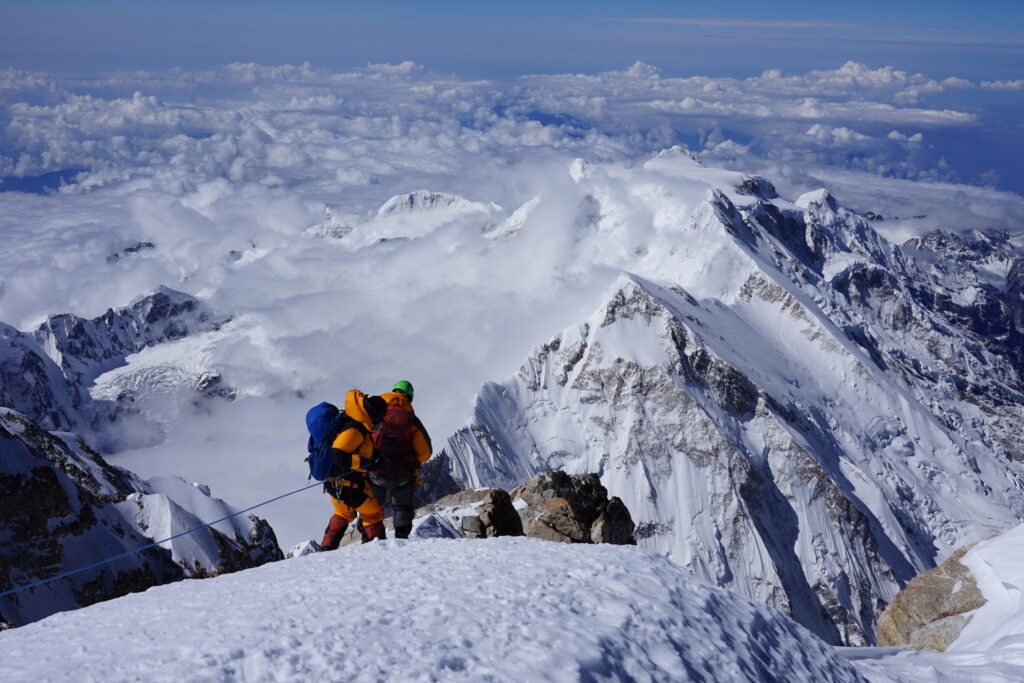
Interview • Ilona Cabral • Jul 27, 2022
Summit to City
An audacious expedition to climb Kanchenjunga and set the fastest-known-time along the Great Himalayan Trail
